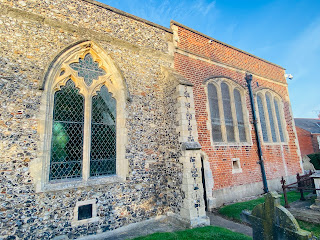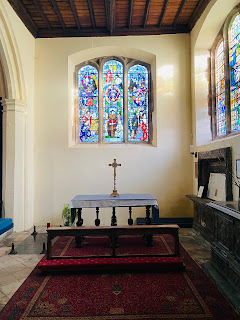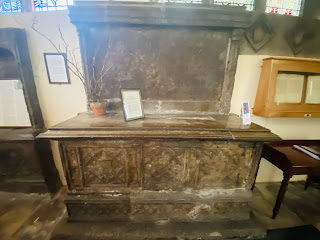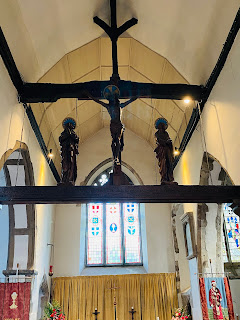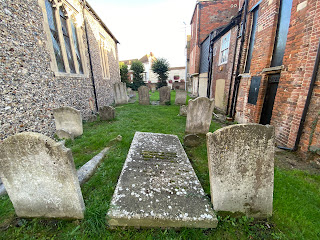ROPER MEMORIAL Translation
Stay, you who pass by, and read these few words that you may gain the power of learning to live better and to die better. You are unconcerned? behold, in a short time, perhaps while still unconcerned, you also will be an example of our mortal condition.
In pious dedication to his parents, Thomas Roper, esquire, grandson to Thomas More through his daughter Margaret (a cause of special honour to this family), inheritor also of his virtues, and following his father William of whom, in that function, he could be seen as a partner rather than a successor. In the court or on the King's Bench, the highest court in the whole realm, he acted as First Secretary for twenty-four years or more, as much by his own great deserts as by wit of his high standing among all men, in firm and public display of good faith, never accustomed to pronounce judgement deceitfully or to sell it at an inordinate price either to litigants or defendants. As his wife, unparalleled as such, he had Lucy, daughter of Anthony Browne, sprung from the illustrious family of Montagu, Knight Commander of the Horse to King Henry VIII and also one of this Councillors. By her he beget twelve children, six of each sex.
On both sides was their wonderful and perfect love, great harmony and mutual esteem. Thus, (both publicly in the court and privately at home) everywhere passing his life in holiness and modesty, when he had come to a quiet old age, like one who falls asleep he rested in Christ in the 65th year of his life, on the 21st day of January in the year 1597. William Rooper (Roper) as a most dutiful son to a most loving parent. Willingly is this set to his merit.
Consider what profit the age of the present time brings; all that exists is as nothing, except for the loving God.
What do the flesh, the blood, the dust, and the shadow do for the proud?
What do you, wretched man, enjoy, being sown as food for worms? You pursue the unclean world, but you shall yourself be pursued, and you who desire everything are caught in a little urn. The world can bring few solaces to the living, and can bring no slight losses after death. Fleeing the things that bring damnation, raise up your soul while living so that it may live in heaven, a bride dressed for God; I, being dead, warn you, who are going to die, about these things: press on, and be mindful of my fate, and even more of your own.







